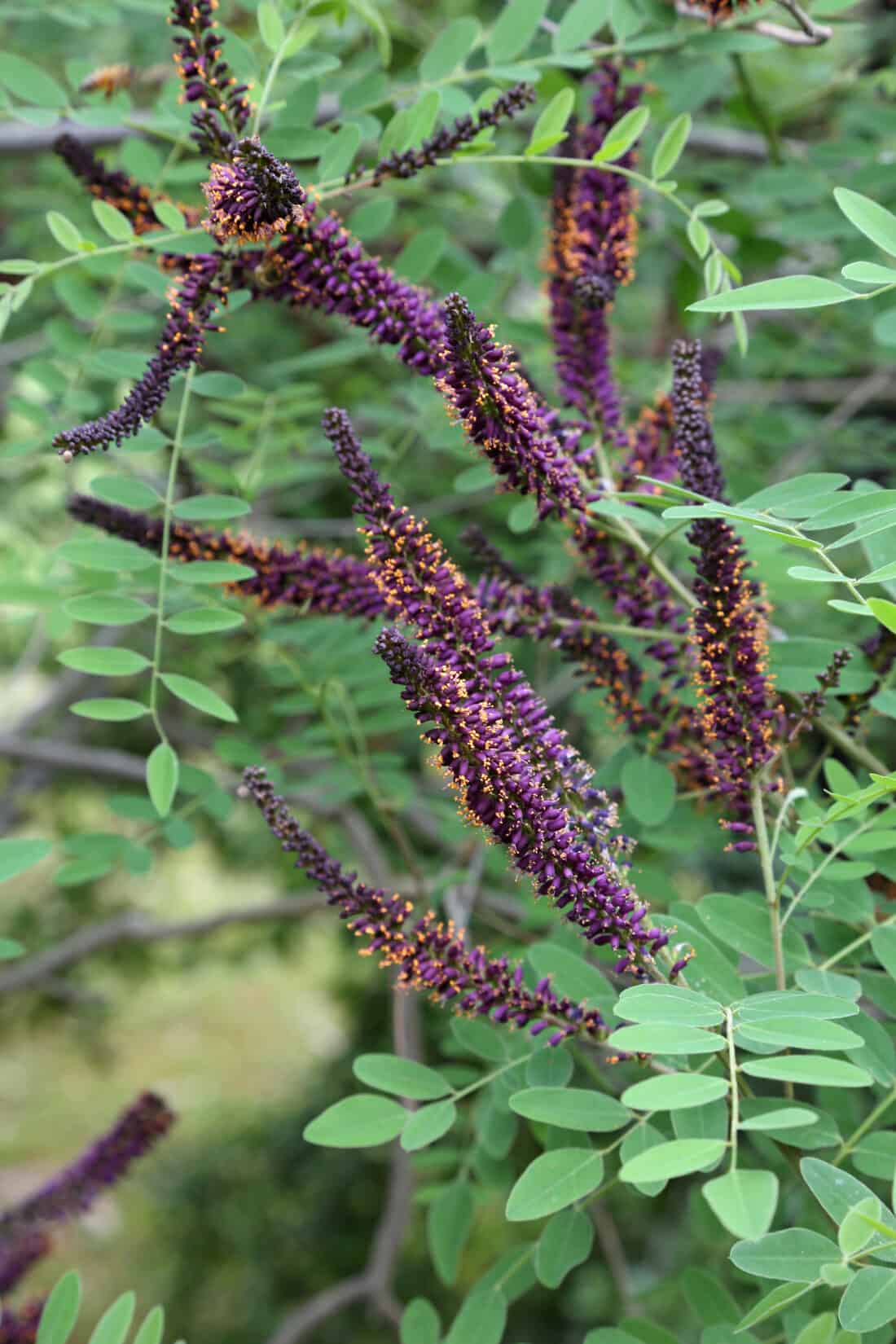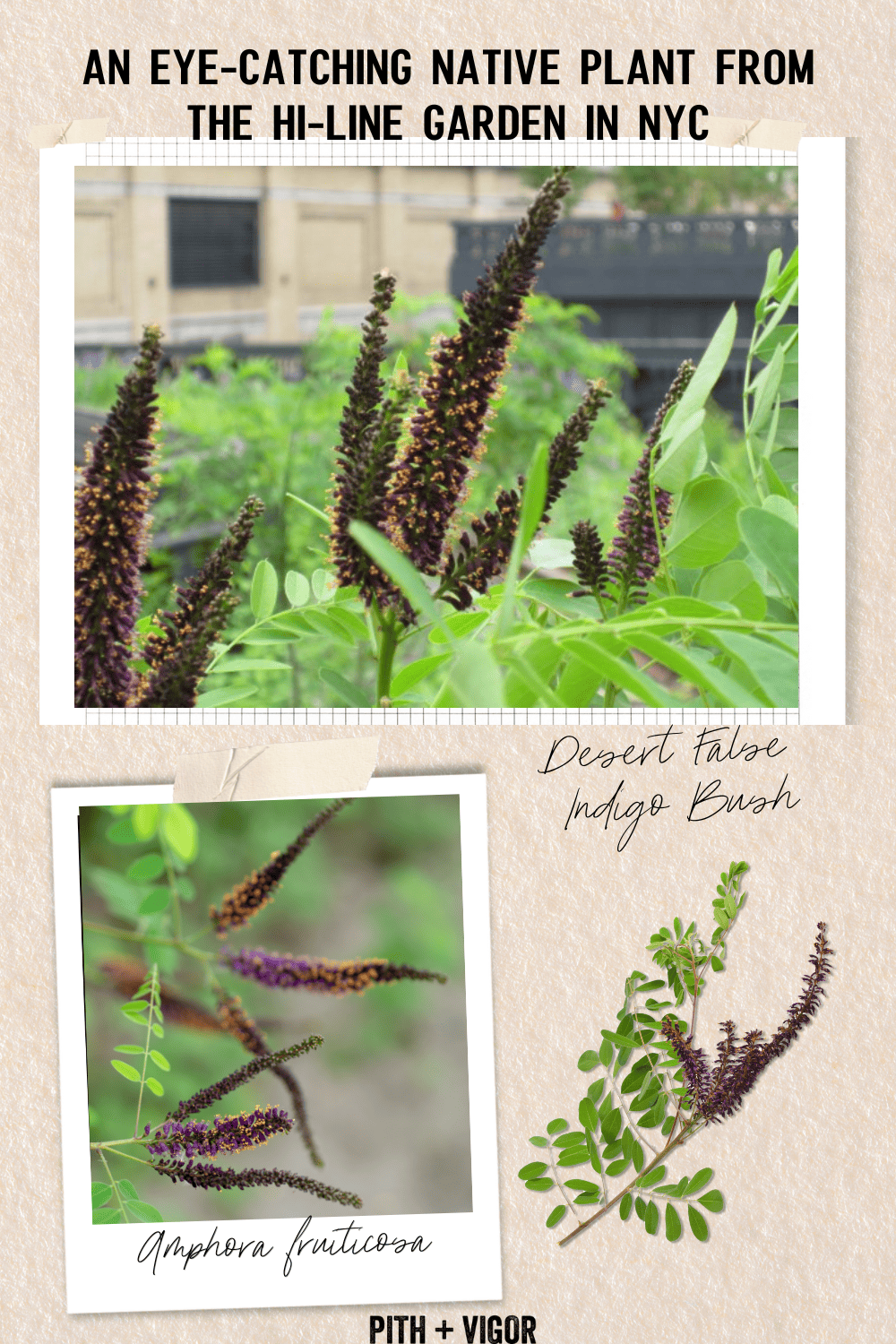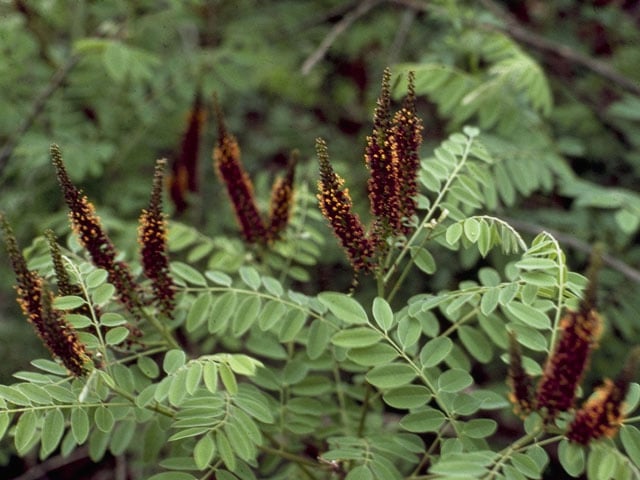Last week I was sorting through some of my old photographs. I came across this one from a couple of years ago on the High Line Garden in Manhattan (Designed by Piet Oudolf).
I had never seen this plant before, so it grabbed my attention.
It is called “false indigo,” and the Latin name is Amorpha fruticosa. (those seed heads! and that foliage!)


After taking this picture, I swore that I would remember this plant and promised to use it in the garden.
But, to be honest, I totally forgot about it until coming across this photograph.
I would like to use it this year, but I am reading that it can be weedy. But I also read that it is native to just about every state and province in North America.
So, it is an attractive, native “weed” that is showy enough to make the cut for one of the world’s most popular gardens, the High Line. I think I love it.
Native plants host native pollinators
Amphora fruticosa is the host plant for the Silver-spotted skipper when they lay eggs. This large skipper is found in most of the United States and southern Canada, and the female lays eggs on plants in the pea family.
The Southern Dogface butterfly (Zerene cesonia) also uses pea family plants as a host (along with alfalfa, coreopsis, houstonia, and verbena – hint – these might make for some good companion planting ideas).
Growing False Indigo (Amphora fruiticosa)
Amorpha fruticosa naturally grows along stream banks. It is in the legume family and has pinnately compound leaves like a black locust. If left unchecked, a shrub of false indigo could grow 12-15 feet tall and, in the wild, will often form dense thickets. The roots of this plant are also nitrogen fixers (makes sense since it is a legume in the family Fabaceae).
I definitely would like to try growing Amorpha fruticosa because of these attractive, deep purple flowers, but I feel that it should be in a location where I can keep a close eye on it. I recall it being so striking and standing out among all of the other plantings on the High Line.
Have you ever grown Amorpha fruticosa? Do you like it, and have you found it to be too weedy to keep in the garden? Am I the only one who thinks we need to watch our language when we talk about plants? (how dare you call it a weed! 😉)
–Rodney

The leaves in the photo are false indigo, the flowers are not. I don’t find it to be a problem as in weedy in Nebraska. It only gets to be about 5H x 6W. The cool blue green color of the plant is delightful. And I like the black seed pods that follow the early spring flowers. Besides the indigo blue flowered variety there are white, yellow, & violet. It quite a striking sculptural plant. If this size is too big there is also a dwarf version.